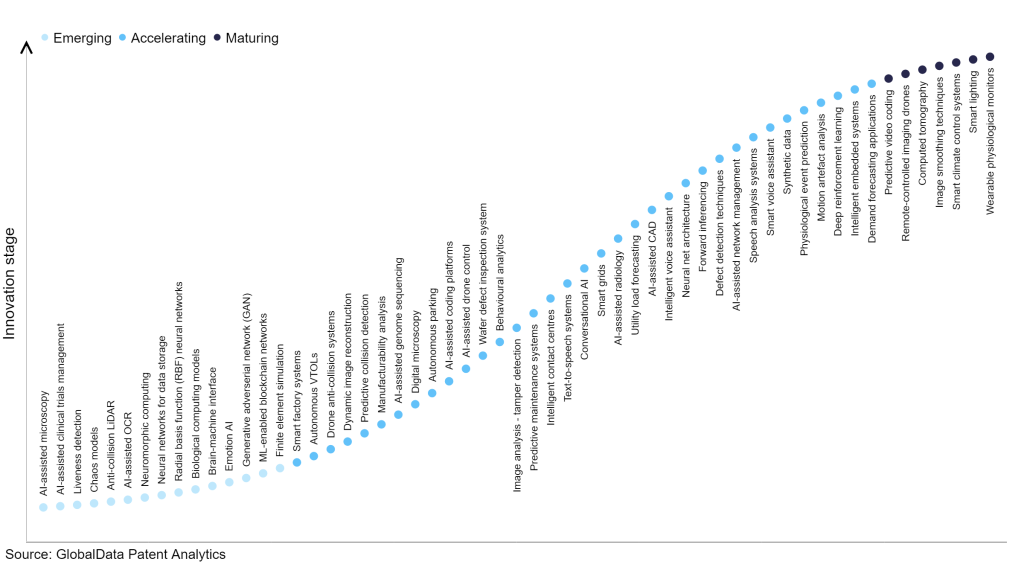
The automotive industry continues to be a hotbed of innovation, with activity driven by the need for greater safety, and the emergence of autonomous and connected vehicles, and growing importance of technologies such as cloud computing and machine learning. In the last three years alone, there have been over 1.2 million patents filed and granted in the automotive industry, according to GlobalData’s report on Artificial intelligence in Automotive: Speed profile estimation.
However, not all innovations are equal and nor do they follow a constant upward trend. Instead, their evolution takes the form of an S-shaped curve that reflects their typical lifecycle from early emergence to accelerating adoption, before finally stabilising and reaching maturity.
Identifying where a particular innovation is on this journey, especially those that are in the emerging and accelerating stages, is essential for understanding their current level of adoption and the likely future trajectory and impact they will have.
290+ innovations will shape the automotive industry
According to GlobalData’s Technology Foresights, which plots the S-curve for the automotive industry using innovation intensity models built on over 619,000 patents, there are 290+ innovation areas that will shape the future of the industry.
Within the emerging innovation stage, manufacturability analysis, autonomous parking, and lidar for vehicle anti-collision are disruptive technologies that are in the early stages of application and should be tracked closely. Speed profile estimation, smart light dimmers, and driver drowsiness detection are some of the accelerating innovation areas, where adoption has been steadily increasing. Among maturing innovation areas are road slope estimation and adaptive cruise control, which are now well established in the industry.
Innovation S-curve for artificial intelligence in the automotive industry

Speed profile estimation is a key innovation area in artificial intelligence
Speed profile estimation allows drivers to accurately predict their travel times and choose an alternate route or time to travel, when necessary. The traditional method for calculating the fastest routes and estimating travel times relies on road size or legal speed limits that remain the same, regardless of the time and day.
GlobalData’s analysis also uncovers the companies at the forefront of each innovation area and assesses the potential reach and impact of their patenting activity across different applications and geographies. According to GlobalData, there are 30+ companies, spanning technology vendors, established automotive companies, and up-and-coming start-ups engaged in the development and application of speed profile estimation.
Key players in speed profile estimation – a disruptive innovation in the automotive industry
‘Application diversity’ measures the number of different applications identified for each relevant patent and broadly splits companies into either ‘niche’ or ‘diversified’ innovators.
‘Geographic reach’ refers to the number of different countries each relevant patent is registered in and reflects the breadth of geographic application intended, ranging from ‘global’ to ‘local’.
Patent volumes related to speed profile estimation
Source: GlobalData Patent Analytics
Porsche Automobil is a key player in the speed profile estimation innovation area. Porsche’s Innodrive predictively sets a vehicle’s speed for upcoming road conditions. It analyses speed limits and topographical road features, such as gradients or corner radii using high-resolution navigation data and information supplied by the radar and video sensors. The InnoDrive modifies the gearshift strategy and speed of the vehicle based on this data. Toyota Motor, Baidu, Hyundai Group, Ford, and Kia are some of the other key players.
To further understand how artificial intelligence is disrupting the automotive industry, access GlobalData’s latest thematic research report on Artificial Intelligence (AI) in Automotive.




